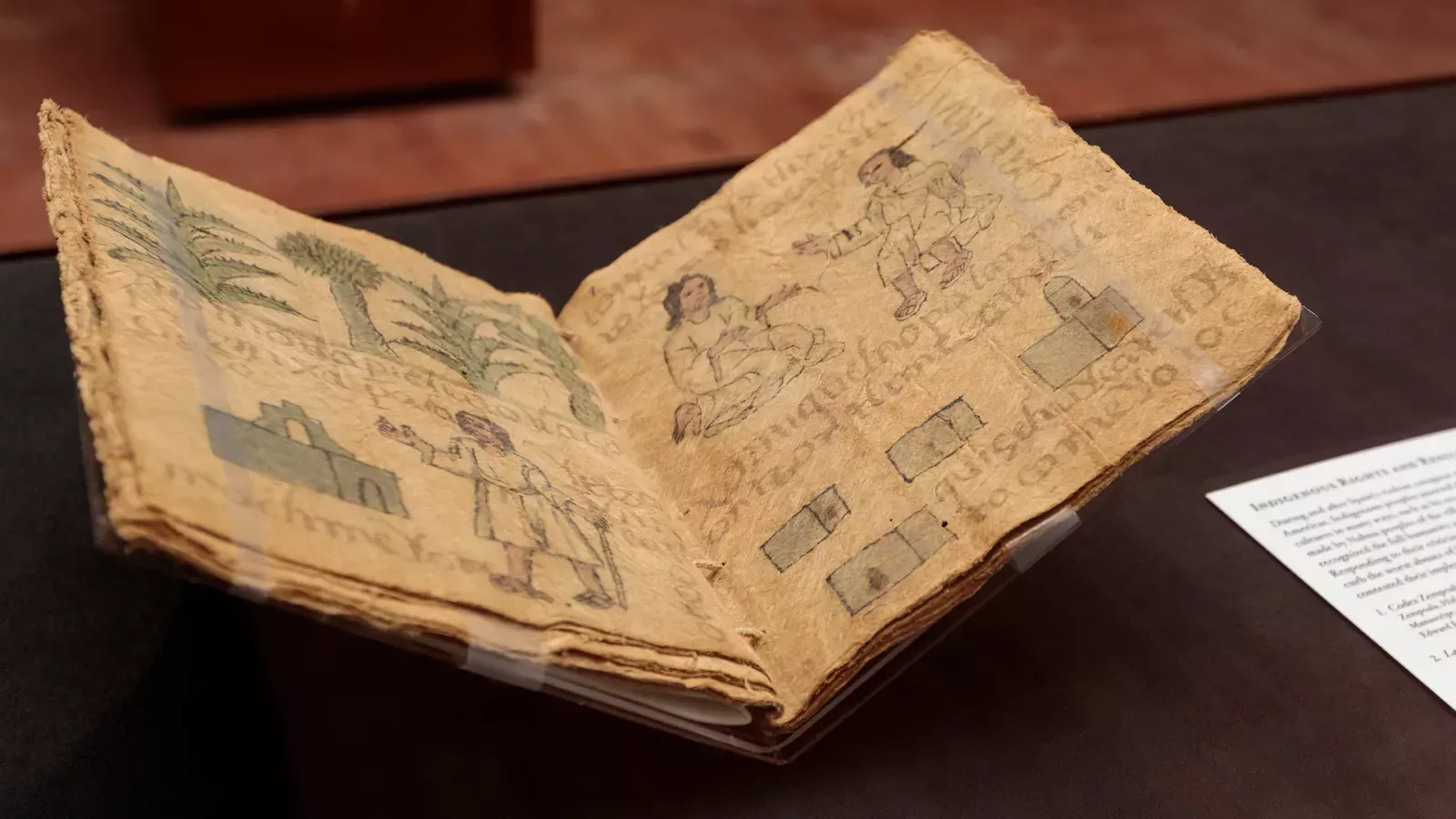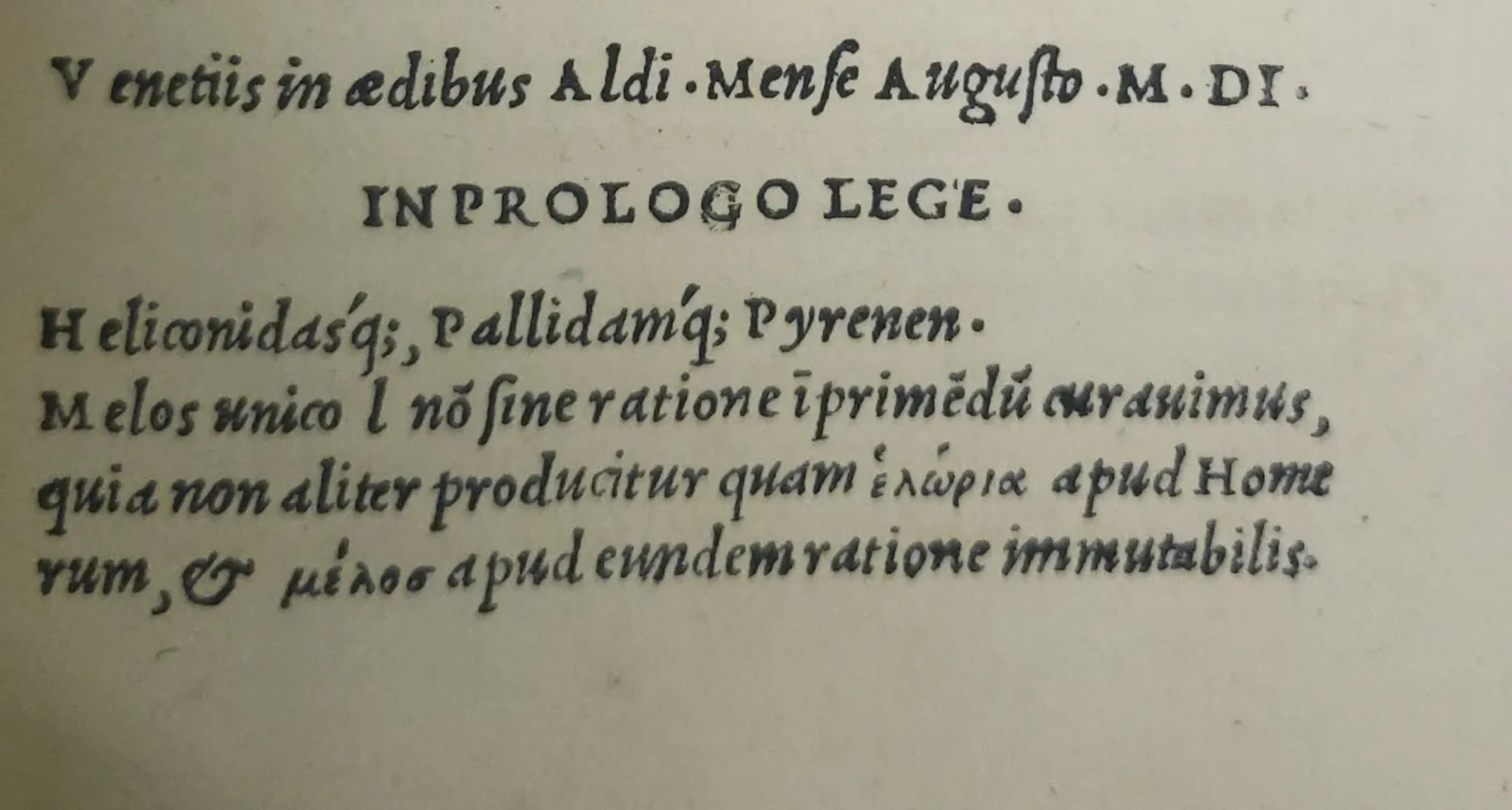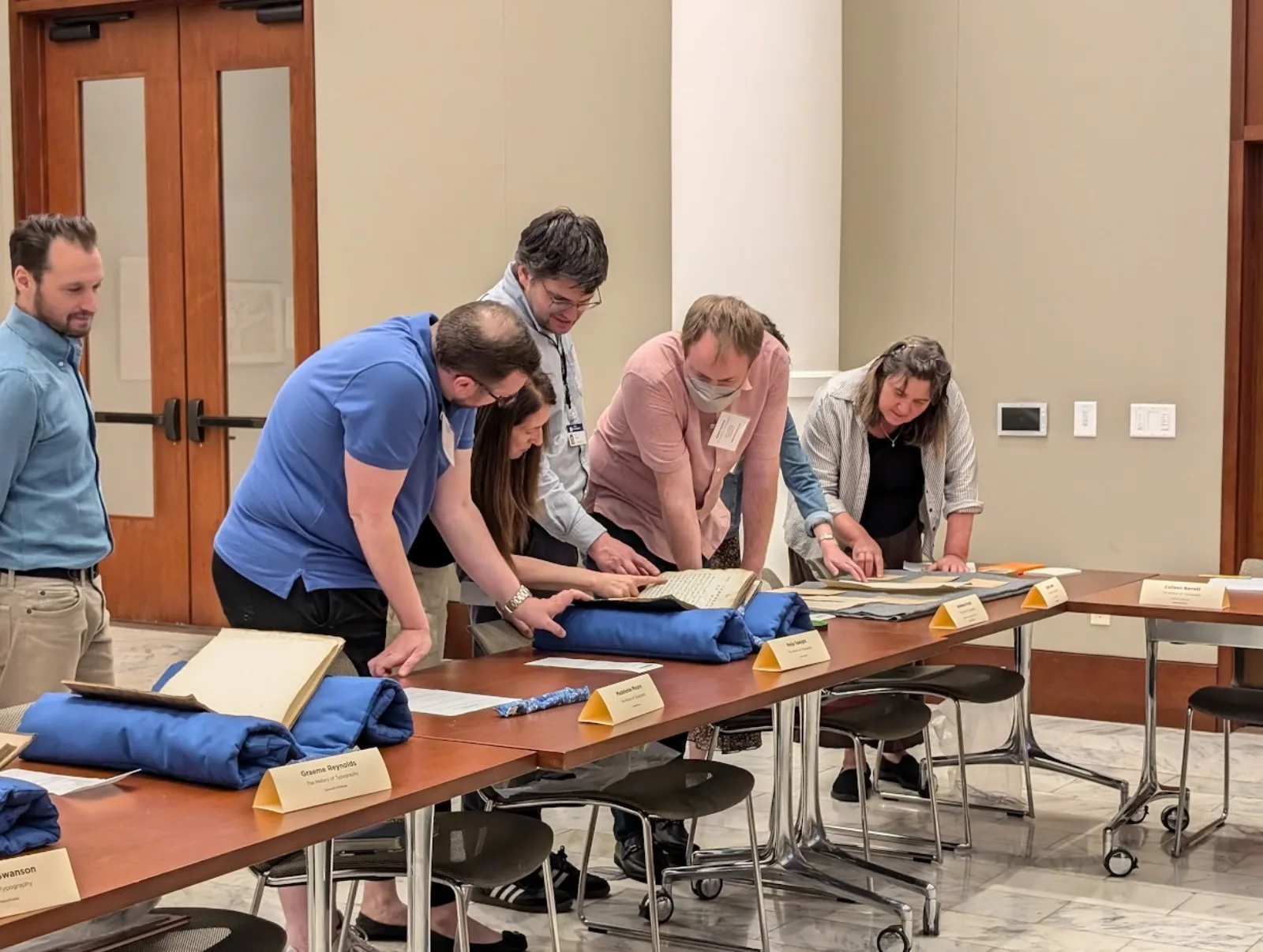At the beginning of August, the Newberry had the exciting opportunity to host two Rare Book School courses, a first for the library. Based at the University of Virginia since 1992, Rare Book School (RBS) is an independent institute that supports the study of the history of books and printing and related subjects. Any given year, RBS offers around 40 different intensive one-week courses related to the history of the book, with topics ranging from “how books are made, who reads them, how they are printed and published, all of those kinds of issues that go into understanding the physical objects of the book as well as the cultural context in which they exist,” says Will Hansen, the Newberry’s Baskes Vice President for Collections and Library Services and Curator of Americana, and one of the Newberry’s Rare Book School Lecturers.
Originally, the primary audience of RBS was rare book librarians who were looking for training that they couldn't get in library schools or in traditional graduate programs. Jill Gage, Custodian of the John M. Wing Foundation on the History of Printing and Bibliographer of British Literature and History and the Newberry’s second Rare Book School Lecturer, adds that although RBS still mainly serves those people, “it's expanded quite a bit, and they do a lot of work with graduate students and new faculty, and they offer a lot of scholarships and fellowship programs around graduate students now as well.”
Former Vice President for Collections and Library Services Alice Schreyer played a significant role in connecting Rare Book School and the Newberry. Schreyer served on the RBS board for many years, and is a longtime friend of RBS Executive Director, Michael Suarez. Alice had long been interested in the Newberry hosting or being involved with Rare Book School courses, and Hansen says, “This was the year where it all coalesced. The two courses that we hosted focused on typography and Indigenous studies and were the two that seemed most logical to start with for the Newberry.”

Rare Book School has a standard five-day, eight-hour structure. Coming together for an intense week to dive deep into one topic can really build a lot of camaraderie among the group. Participants must apply and be selected for each course, and students come from all over the United States. For the Newberry courses, students came from nearby areas, like Kentucky or St. Louis, but also from the Northeast, California, and Hawaii. Getting hands on experience with materials makes it worth the trip.
When presented with the opportunity to teach, Gage knew right away that she wanted to lead a course about the history of typography. “The Newberry’s Wing collection is a very famous typography collection. We have virtually everything that you would want to teach that course here,” Gage says. “Type is something that you can pick up and hold in your hand, but most people don’t think of type that way. They think of it as the Times New Romans that you see in print.” Gage taught alongside Sasha Tochilovsky, who is the Curator of the Herb Lubalin Study Center of Design and Typography at Cooper Union in New York. Together, Gage and Tochilovsky explored how we got from point A to Point B in the over 600 years of typography. From the 15th century to the 21st century, Gage used the Newberry’s collection to look at the political, religious, and social aspects of typography, and how people and processes relate to it. “Part of it is like, here’s how you actually describe what we’re looking at, and why it looks that way and how it was made. But then let’s go further and talk about all the things that surround it, which is what made the Newberry such a good place to host a course like this.”
Hansen co-taught his course, “A History of the Indigenous Book in the Americas,” with University of Kansas professor Robert Warrior. The class offered a very broad introduction into the topic, which obviously covers a huge ground. Hansen and Warrior’s approach was not necessarily chronological, but instead treated forms and types of artifacts one by one before looking more closely at a few items and their process of creation and constituent materials. Later in the week, the course focused on ideas of authorship and the various models of publications and circulation of books specifically by Indigenous people. “It was all sort of mixed together,” says Hansen, "but, again, the collection at the Newberry is so rich that just about anything we would want to include, we could.”

During the week, RBS and the Newberry also hosted guest speakers, including the Newberry’s Dave Weimer, Director of the Smith Center for the History of Cartography and Robert A. Holland Curator of Maps, who spoke about printing for the blind and the technologies used to make those books and materials possible. Guest speaker Douglas Wilson, talked about linotype machines, which is a “line casting” machine used in printing, often extremely loud. Schools for the deaf often hosted linotype training programs, as working in that subgenre of printing was a viable career option for the deaf for many years.
Both Hansen and Gage are previous Rare Book School attendees and can attest to its place as a fundamental educational opportunity for rare book librarians. Gage shares, “I learned a lot in a week. It's just a totally different experience than even a semester-long course. The other part of Rare Book School is networking and being able to meet other librarians, other experts in the fields that have book history.” Hansen adds, “RBS is truly a unique experience where you get to build a network of people who you would have otherwise not crossed paths with, or ever met in person.”
This story is part of the Newberry’s Donor Digest, Fall 2024. In this newsletter, we share with donors exciting stories of the work made possible by their generosity. Learn more about supporting the library and its programs.
